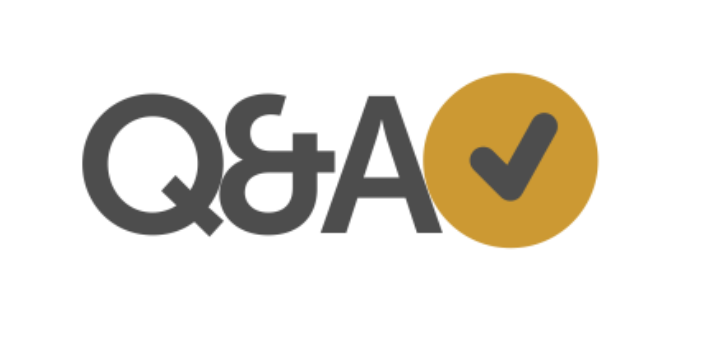The power of asking the right questions – it’s a skill that comes in handy everywhere. Whether you’re chatting with a friend or dealing with some serious legal stuff. But here’s the twist: ever heard of leading questions? They’re like sneaky little devils that try to nudge you toward a specific answer, kind of leading you down a certain path without you even realizing it.
In this article, we’re diving deep into the world of leading questions – what they are, why people use them, and most importantly, how to spot them (and avoid falling into their trap).
Get ready for over 40 juicy examples and a handy template to keep you on your toes.
Table of contents
What is a Leading Question?
A leading question is a type of question that subtly prompts or suggests a specific answer, often by including information or assumptions within the question itself. These questions are designed to influence the respondent’s thoughts or steer them toward a particular response.
Leading questions can be used intentionally or unintentionally and are commonly found in various contexts, including interviews, surveys, interrogations, and courtroom proceedings. The use of leading questions can potentially bias the responses and undermine the accuracy and reliability of the information gathered.
Therefore, it’s essential to be mindful of the framing of questions to ensure neutrality and avoid leading language.
Check out: American Community Survey Questions Review | Legit or Scam
Leading Survey Questions Examples
Opinion-based Leading survey questions examples
#1. Don’t you agree that the new policy will significantly improve workplace productivity?
#2. Wouldn’t you say that the recent changes have made our company a more desirable place to work?
#3. Do you think it’s fair to say that our team is the most efficient in the department?
#4. Isn’t it true that the project would have been more successful with better leadership?
#5. Do you believe that the new marketing strategy will increase our customer base?
#6. Don’t you think that our competitor’s product is far superior to ours?
#7. Wouldn’t you agree that the recent decision was a major setback for our team?
#8. Do you think it’s accurate to say that our company is ahead of the curve in terms of innovation?
#9. Do you believe that the recent budget cuts will negatively impact employee morale?
For the most fun, read also: 250+ Best Taylor Swift Trivia Questions and Answers (Easiest to Hardest)
Assumption-based Leading survey questions examples
#10. Since you’re passionate about sustainability, wouldn’t you agree that our company should prioritize eco-friendly initiatives?
#11. Given your expertise in the field, don’t you think that this project aligns perfectly with your skill set?
#12. Considering your experience with similar projects, wouldn’t you agree that this timeline is feasible?
#13. Given your dedication to customer satisfaction, wouldn’t you say that implementing a 24/7 support system is necessary?
#14. Knowing how detail-oriented you are, wouldn’t you say that this report meets our standards of accuracy?
#15. Considering your track record of success, wouldn’t you agree that taking this approach is the best course of action?
#16. Given your enthusiasm for innovation, wouldn’t you say that investing in new technology is essential for our company’s growth?
#17. Since you’re always mindful of budget constraints, would you agree that this expense is justified?
#18. Considering your commitment to teamwork, wouldn’t you say that assigning you as team leader would ensure project success?
Check out this related content: 150+ Easy-to-Answer Trivia Questions to Spice Up Your Night
Directive Leading survey questions examples
#19. Can you explain why you believe the new policy is ineffective?
#20. Would you mind telling me how you plan to address the issue with the project timeline?
#21. Could you describe how you would improve customer satisfaction levels in your department?
#22. Can you outline the steps you would take to increase sales revenue next quarter?
#23. Would you be willing to share your thoughts on why the team missed the deadline?
#24. Can you provide details on how you would handle the budget constraints for the upcoming project?
#25. Would you elaborate on your strategy for reducing employee turnover in your division?
#26. Could you describe how you would implement changes to improve workplace morale?
#27. Can you outline your proposal for increasing productivity within your team?
#28. Would you explain how you plan to address the communication breakdown between departments?
#29. Could you describe your approach to resolving conflicts among team members?
#30. Can you share your strategy for adapting to changes in market trends?
#31. Would you mind elaborating on your plan to improve product quality control?
#32. Can you provide details on how you would enhance employee training and development programs?
#33. Could you explain your rationale for reallocating resources to different projects within the department?
Check out this related content: 50+ Bad Survey Questions You Must Avoid in Your Questionnaire
Loaded Leading survey questions examples
#34. Don’t you think it’s unfair that some employees get preferential treatment over others?
#35. Isn’t it obvious that the recent changes were made without considering the opinions of the team?
#36. Wouldn’t you agree that our competitors are far more innovative than we are?
#37. Isn’t it true that the new manager’s leadership style is causing a decline in team morale?
#38. Don’t you feel frustrated by the lack of support from upper management?
#39. Isn’t it clear that the new policy was implemented solely to benefit certain individuals?
#40 Don’t you think it’s outrageous that we have to work overtime without compensation?
#41. Wouldn’t you agree that the recent decision was a complete disaster for the company?
#42. Isn’t it evident that the company cares more about profits than employee well-being?
#43. Don’t you find it unacceptable that we haven’t received any training for the new software?
#44. Isn’t it obvious that the project’s failure is due to poor communication within the team?
#45. Don’t you feel that the recent performance review was unfairly biased against you?
#46. Wouldn’t you agree that the company’s lack of transparency is concerning?
#47. Isn’t it true that the current workload is unsustainable for our team?
For the most fun, read also: 50+ Leadership Survey Questions You Must Ask for Company Growth
Binary Leading survey questions examples
#48. Do you prefer the new system, yes or no?
#49. Would you rather work on this project or take on a different assignment?
#50. Is the company’s decision-making effective, yes or no?
#51. Do you believe the current strategy will lead to success, yes or no?
#52.Would you say the meeting was productive, yes or no?
#53. Is the team meeting its goals, yes or no?
#54. Do you agree with the proposed changes, yes or no?
#55. Is the company providing adequate support, yes or no?
#56. Do you think the training program is effective, yes or no?
#57. Are you happy with the current work environment, yes or no?
#58. Would you consider the project a success, yes or no?
#59. Do you believe the decision was fair, yes or no?
#60. Is the company meeting customer expectations, yes or no?
#61. Would you recommend the product to others, yes or no?
Check out this related content: 70+ User Experience Survey Questions With Sample Questionnaire
Leading Questions Examples with Templates
Positive Leading Question:
– “Don’t you agree that the new policy will greatly benefit everyone?”
Negative Leading Question:
“Wouldn’t you say that the current system is completely inefficient?”
Tag Question:
“That was a great presentation, wasn’t it?”
Assumptive Leading Question:
“Since you’re already in favor of the project, how soon can we expect your support?”
Choice-Embedded Leading Question:
“Would you like to sign up for our premium service now or later?”
Leading Question with Biased Language:
“Isn’t it obvious that our competitor’s product is inferior to ours?”
Leading Question with Limited Options: – “Wouldn’t you agree that we have no choice but to implement these changes immediately?”
Leading Question with a Presumption:
“Given your expertise in this area, wouldn’t you say this approach is the most effective?”
Leading Question with Social Pressure:
“Don’t you think everyone else in the team would support this decision?”
Why are Leading Survey Questions Examples Used?
Leading questions are used for several reasons:
- To Influence Responses: Leading questions are best when the questioner wants to steer the respondent toward a particular answer or viewpoint. By suggesting a desired response within the question itself, the questioner can influence the direction of the conversation.
- To Elicit Specific Information: In some cases, questioners may use leading questions to extract specific information from the respondent. By suggestively framing the question, the questioner may hope to prompt the respondent to provide the desired details.
- To Shape Narratives: Leading questions help to shape the narrative of a conversation or interview. By guiding the respondent’s answers, the questioner can help create a particular storyline or perspective.
- To Obtain Confirmation: Questioners may use leading questions to seek confirmation of their own beliefs or assumptions. By phrasing the question in a way that aligns with their perspective, they may hope to elicit agreement from the respondent.
- To Influence Decision-Making: In legal contexts, they help attorneys to influence the testimony of witnesses or sway the opinions of jurors. By suggestively framing questions, attorneys may attempt to strengthen their case or undermine the credibility of opposing witnesses.
Leading questions shape conversations, elicit specific information, and influence the perspectives of respondents. However, their use can also raise concerns about bias, accuracy, and fairness in communication.
For the most fun, read also: 55+ Post Meeting Survey Questions for Quality Feedback
What are the Potential Consequences of Using Leading Survey Questions Examples?
Using leading questions can have several potential consequences, including:
- Biased Responses: Leading questions can elicit biased responses from respondents by subtly guiding them toward a particular answer or viewpoint. This can distort the accuracy and reliability of the information gathered.
- Misinterpretation of Data: Responses to leading questions may not accurately reflect the true opinions or experiences of respondents, leading to misinterpretation of data and incorrect conclusions.
- Undermining Credibility: Employing leading questions can undermine the credibility of the questioner or the research being conducted. Respondents may perceive the questions as manipulative or biased, leading to skepticism about the validity of the findings.
- Legal Implications: In legal contexts, leading questions can be objectionable and may lead to the exclusion of evidence. They can also influence the testimony of witnesses or sway the opinions of jurors, potentially affecting the outcome of legal proceedings.
- Damage to Relationships: Continuously using leading questions in conversations or interviews can damage relationships, as it may convey a lack of respect for the respondent’s autonomy and perspective. This can lead to distrust and strain in interpersonal interactions.
- Ineffective Decision-Making: When decisions are based on information gathered through leading questions, they may not accurately reflect the realities of a situation. This can lead to ineffective decision-making and misguided actions.
- Missed Opportunities for Insight: By steering respondents towards predetermined answers, leading questions can prevent valuable insights from emerging during conversations or research. This limits the opportunity to explore diverse perspectives and uncover new information.
The use of leading questions can compromise the integrity of data collection, undermine trust, and hinder the ability to make informed decisions. It’s essential to be mindful of the framing of questions and strive to ask neutral, open-ended questions to ensure unbiased and accurate responses.
Check out this related content: 120+ Climate Survey Questions for your Questionnaire
Frequently Asked Questions
A leading question is a type of question that suggests or prompts a specific answer, often by phrasing the question in a way that directs the respondent’s thoughts or influences their response.
Leading questions typically contain presuppositions, assumptions, or biased language that guides the respondent toward a specific answer.
Using leading questions can undermine the validity and reliability of the information gathered, as they may elicit biased or inaccurate responses. In legal contexts, leading questions can be objectionable and may lead to the exclusion of evidence.
To avoid using leading questions, it’s essential to frame questions neutrally, without presupposing a particular answer, and to focus on gathering unbiased information. Additionally, soliciting open-ended responses can help encourage honest and independent viewpoints from respondents.
Conclusion
Understanding what constitutes a leading question is essential for anyone involved in asking questions, whether in professional settings, research, or everyday conversations.
By recognizing the characteristics and potential consequences of leading questions, individuals can strive to ask questions that promote unbiased responses and facilitate meaningful dialogue.
By being mindful of how questions are framed and avoiding leading language, we can ensure that the information we gather is accurate, reliable, and reflective of diverse perspectives.
References
- questionpro.com– leading survey questions examples
- delighted.com– leading survey questions
- surveysparrow.com– leading survey questions examples





